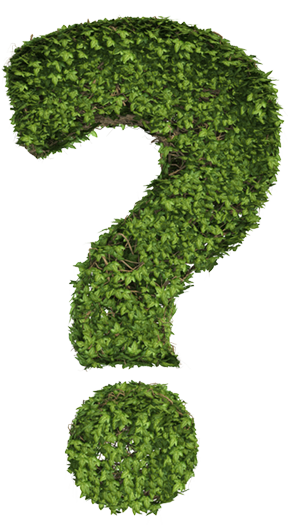September 25, 2020
 Project Learning Tree is excited to launch a new series of theme-based activity collections that focus on specific grade levels and topics.
Project Learning Tree is excited to launch a new series of theme-based activity collections that focus on specific grade levels and topics.
Discover Your Urban Forest is the first collection of activities to be released as part of this new themed series for educators. It features three brand new PLT activities for educators of students in grades 6-8 that invite learners to explore their urban environment and investigate environmental issues that affect their urban community.
The activity collection is available for purchase from PLT’s Shop as a downloadable PDF for $5.95.
More theme-based activity collections will be coming soon for grades K-2, 3-5, and 6-8.
The Urban Environment
Most U.S. students and their families are city dwellers. According to the U.S. Census Bureau, more than 70 percent of the U.S. population lives and works in urban areas of 50,000 or more people, and the percentage is steadily rising. *1
Many people think that “the environment” refers only to areas that are separate from humans. However, the environment is the sum of all living and nonliving components that affect people and other organisms. It includes both natural habitats and dense cityscapes. The environment influences people, and people both depend on and influence the environment.
The activities in Discover Your Urban Forest encourage learners to investigate environmental issues that affect their urban community. By inspiring youth to learn about the place they live, these activities help students better understand how the world works and what sustains them.
Students will recognize that: *2
- Nature can be found all around the city. Sometimes all that is needed is an invitation to find it.
- Survival depends on natural systems. No matter where you live, everyone needs food, water, air, space, and natural resources.
- Youth are empowered. Whether it is a city sidewalk, an urban forest, or a community park, urban environments provide rich habitat worthy of study and exploration. By learning about where they live, students are empowered to make the world a better place, starting within their own school or community.
- Getting outdoors has many benefits. Most youth—especially youth in urban communities—spend more time indoors. Getting outdoors has health benefits, helps learners move and think, fosters a sense of community, and engenders hope.
- Diversity is an asset. Urban environments tend to be more racially and ethnically diverse than rural environments. Project Learning Tree’s activities encourage learners to share and value diverse perspectives as they explore different landscapes.
Discover Your Urban Forest: Grades 6-8 Activities
Discover Your Urban Forest features three new PLT activities for educators of students in grades 6-8. Designed to be flexible, the activities can be used as individual, stand-alone lessons, or all together as a cohesive unit of instruction using a storyline technique.
1. Decisions, Decisions
Decisions about community land use are complex and often involve many people in many ways.
Students use trees as a backdrop to develop a land-use plan.
2. Environmental Justice for All
Everyone has an equal right to a healthy environment—but does everyone have a healthy environment?
Students propose actions to resolve various scenarios and then research issues related to environmental justice in their own state.
3. Forest in the City
The trees in our communities provide many benefits: they improve air quality, store carbon, and conserve energy. Trees also enhance human health by reducing blood pressure, decreasing stress, and elevating attentiveness.
Students conduct a survey to investigate the social and psychological effects of the urban forest.
Learning Progressions
Storylines provide connectedness and continuity to individual activities and can serve as the instructional glue that holds areas of knowledge and skills together. The activities in Discover Your Urban Forest may be linked together into a unit of instruction using a storyline technique, such as the one that follows.
Guiding Question: How does the urban forest support our community’s sustainability and resilience?
Storyline: Students explore relationships between the urban forest and the component parts of communities, as well as investigate potential environmental justice issues in their own community.
The sequence of individual activities supports this storyline:
- Beginning with “Decisions, Decisions” introduce the idea that community members have different perceptions of the value of trees, and different ideas about how community land should be allocated.
- The community case studies in “Environmental Justice for All” showcase that environmental decisions may have different (and often unknown or unintended) impacts on different groups. Use EJSCREEN to investigate your own state or region for potential environmental justice issues related to trees, the urban forest, or other community parameters.
- “Forest in the City” challenges students to investigate of the social and psychological effects of trees, using either an example survey provided or one they design. Analyze results from all three activities to recommend actions for making communities more resilient and sustainable.
New Features Within Each Activity
In addition to the typical elements that educators have come to rely on from PLT, the following new features in our theme-based series will further help educators adapt the activities for specific groups and settings.
Academic Standards
Classroom educators and nonformal educators alike need to ensure that instruction helps diverse learners meet rigorous academic benchmarks. Each PLT activity displays explicit connections to practices and concepts mandated by the following national academic standards.
Here is an example from “Forest in the City:”

Take It Outside!
Describes how to extend student learning into the outdoors.
Differentiated Instruction Strategies
- Cooperative Learning
- ELA Skills
- Hands-On Learning
- Higher-Order Thinking
- Multiple Solution Pathways
- Nonlinguistic Representations
- Personal Connections
- Student Voice
Did You Know?
Forest Facts present interesting insights into forests as global solutions for environmental, economic, and social sustainability.
 Career Corner
Career Corner
Introduces youth to forest-related careers.
Purchase Discover Your Urban Forest now from PLT’s Shop for $5.95.
Resources
[*1] “New Census Data Show Differences Between Urban and Rural Populations.” U.S. Census Bureau. December 8, 2016.
[*2] Urban Environmental Education. Edited by Alex Russ. 2015. Ithaca, NY and Washington, DC: Cornell University Civic Ecology Lab, NAAEE and EECapacity.






